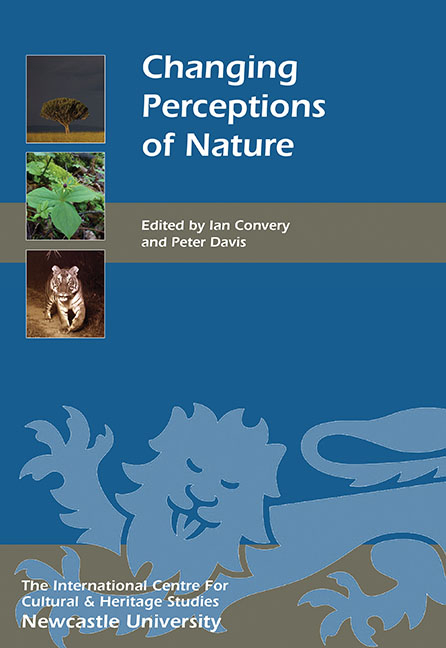Book contents
- Frontmatter
- Contents
- List of Illustrations
- Acknowledgments
- List of Abbreviations
- Foreword
- Introduction
- HISTORICAL PERSPECTIVES ON NATURE
- COLLECTING NATURE
- INTERPRETING NATURE AND LANDSCAPES
- 11 Changed Attitudes to Nature Reflected in the Transformation of Menageries to Zoos
- 12 Botanic Gardens: Changing Perceptions of Plants
- 13 Shifting Interpretations of the English Lake District
- 14 Facebook Nature: My Generation and Other Animals
- 15 Visual Narratives in Wildlife Film-making
- 16 A History of Half a Century of Wildlife Television and its Impact on Audiences
- 17 Landscape, Nature and the Contemporary Sublime in Illustrated Children's Literature
- CONSERVING NATURE
- PEOPLE–NATURE INTERACTIONS
- List of Contributors
- Index
- Miscellaneous Endmatter
15 - Visual Narratives in Wildlife Film-making
from INTERPRETING NATURE AND LANDSCAPES
Published online by Cambridge University Press: 26 October 2017
- Frontmatter
- Contents
- List of Illustrations
- Acknowledgments
- List of Abbreviations
- Foreword
- Introduction
- HISTORICAL PERSPECTIVES ON NATURE
- COLLECTING NATURE
- INTERPRETING NATURE AND LANDSCAPES
- 11 Changed Attitudes to Nature Reflected in the Transformation of Menageries to Zoos
- 12 Botanic Gardens: Changing Perceptions of Plants
- 13 Shifting Interpretations of the English Lake District
- 14 Facebook Nature: My Generation and Other Animals
- 15 Visual Narratives in Wildlife Film-making
- 16 A History of Half a Century of Wildlife Television and its Impact on Audiences
- 17 Landscape, Nature and the Contemporary Sublime in Illustrated Children's Literature
- CONSERVING NATURE
- PEOPLE–NATURE INTERACTIONS
- List of Contributors
- Index
- Miscellaneous Endmatter
Summary
What is it about wildlife films that stimulate, move and continue to enthuse viewers? Over time, wildlife film-making has changed our perceptions of nature and, as techniques and skills have developed, the viewing experience has become increasingly complex: at times intimate, spectacular and all-encompassing. I am a natural history film-maker with over twenty-five years’ experience; for me one of the great tensions in natural history film is finding the balance between explaining animal behaviour, encouraging empathy and interest in nature, and entertaining the audience through an engaging story.
Wildlife film audiences have layers of culture through which they interpret and view behaviour. Animals, on the other hand, tend to behave naturally and instinctively in order to survive. Often these behaviours are within the same parameters as the audience, eliciting recognition, comparisons and empathy. Indeed, empathy is a significant factor in terms of connecting with the audience. As a film-maker it is my wish not only to tell a story, but also to encourage the audience to empathise with the narrative. Of course, there is always the risk of anthropomorphism, but it is possible to tell an engaging story that connects with the audience without resorting to anthropomorphic cliches, which I will discuss later.
As a natural history camerawoman I am usually asked two questions in relation to my professional career: ‘What's the most dangerous scenario you've been in?’ (Drunken policeman with AK47 in Cameroon/charged by a hamstrung buffalo, if you are interested) and how did we get a certain shot. It is the latter that is at the heart of what I do, and this is what I will focus on in this chapter. There are so many ingredients to telling a story and it is never as simple as just ‘one shot’. While technology, style and viewing habits change, trying to become ever more immersive – so that the audience feels at the centre of the action – the heart of wildlife film-making remains strongly focused on story.
In telling a story or depicting a narrative, wildlife film-makers have an immediate problem in that we tend not to be able to direct our ‘stars’.
- Type
- Chapter
- Information
- Changing Perceptions of Nature , pp. 157 - 164Publisher: Boydell & BrewerPrint publication year: 2016

